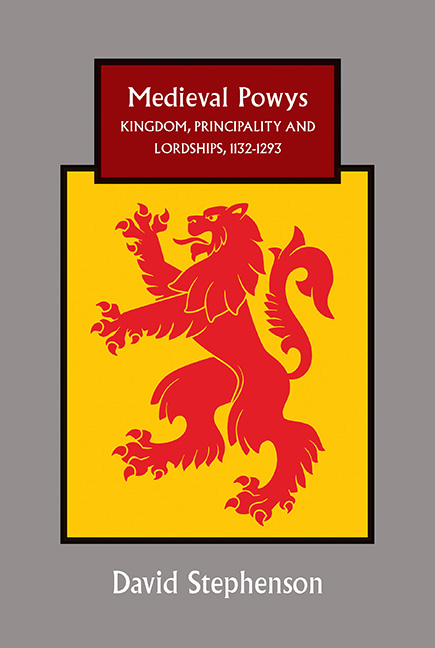Book contents
- Frontmatter
- Dedication
- Contents
- List of Illustrations
- Acknowledgements
- Abbreviations
- Map
- Miscellaneous Frontmatter
- Introduction: The problem of medieval Powys: historiography and sources
- Part I Powysian Polities in the Twelfth and Thirteenth Centuries: A Political Narrative
- Part II Characteristics of the Powysian Polities: Structures, Fault-Lines and Political Culture
- Appendices
- Select bibliography
- Index
- Miscellaneous Endmatter
Introduction: The problem of medieval Powys: historiography and sources
Published online by Cambridge University Press: 29 April 2017
- Frontmatter
- Dedication
- Contents
- List of Illustrations
- Acknowledgements
- Abbreviations
- Map
- Miscellaneous Frontmatter
- Introduction: The problem of medieval Powys: historiography and sources
- Part I Powysian Polities in the Twelfth and Thirteenth Centuries: A Political Narrative
- Part II Characteristics of the Powysian Polities: Structures, Fault-Lines and Political Culture
- Appendices
- Select bibliography
- Index
- Miscellaneous Endmatter
Summary
The twelfth-century kingdom of Powys and the lordships that succeeded it occupied a substantial proportion – around a quarter – of the land-surface of Wales; the area of the kingdom extended, in the formulation of the Dream of Rhonabwy, from the furthest reaches of Arwystli in the south-west to Pulford, close to Chester, in the north-east, and in that of the poet Gwalchmai, from the summit of Pumlumon to the gates of Chester, and from the church of Bangor Is Coed in the east to the borders of Meirionnydd in the west. Throughout the twelfth and thirteenth centuries Powys was a land of somewhat shifting boundaries. For the editors of the Anglo-Norman prose romance Fouke le Fitz Waryn, northern Powys was ‘an amorphous region’; the same might well have been said of southern Powys. There are many examples of the shifting borders of the land of Powys. In the years around 1100 it is probable that it was regarded as occupying a much more restricted territory than the developed realm of the mid-twelfth century. The poem Mawl Hywel ap Goronwy (‘In praise of Hywel ap Goronwy’), probably composed in 1101, makes a distinction between Powys and several regions that were subsequently regarded as being components of the Powysian lands, namely Iâl, Edeirnion, Cyfeiliog, the Severn Valley (probably the greater Arwystli that is dimly visible at this period) and Dygen, the region of the Breiddin hills east of Welshpool.
Elsewhere there are hints of local insularities that almost certainly endured into the twelfth century, such as the cluster of Tydecho dedications in Mawddwy and adjacent parts of Cyfeiliog and Caereinion that constitute a unique cult-area associated with that saint. Amongst its outlying regions Arwystli before the very last years of the twelfth century could not properly be reckoned as part of the realm of Powys, for it had its own royal dynasty, albeit one which at times accepted the overlordship of the Powysian king Madog ap Maredudd; Cyfeiliog just to the north of Arwystli was a territory to which the rulers of both Gwynedd and Deheubarth also laid claim and which on occasions they possessed. The problematic status of Cyfeiliog may be hinted at in a reference by Gerald of Wales to Gwenwynwyn as ‘prince of Powys and Cyfeiliog’.
Information
- Type
- Chapter
- Information
- Medieval PowysKingdom, Principality and Lordships, 1132-1293, pp. 1 - 20Publisher: Boydell & BrewerPrint publication year: 2016
